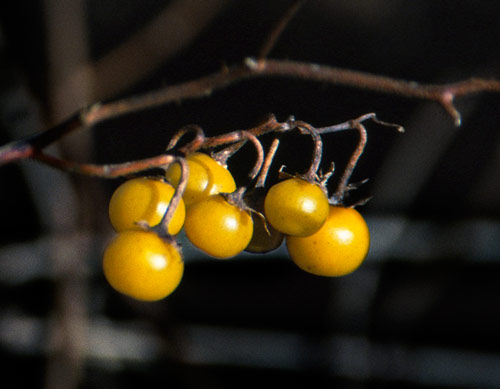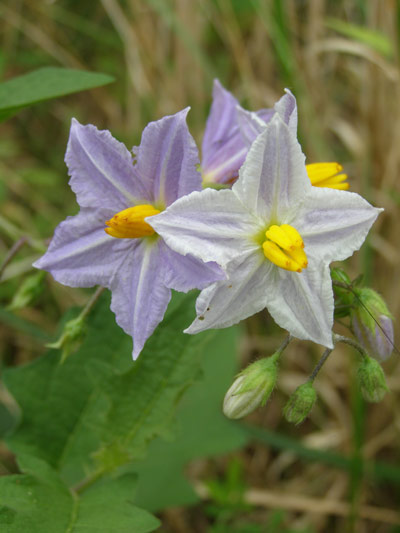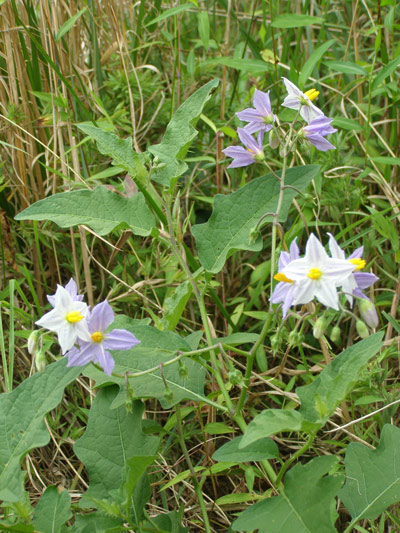A teaching moment
By Ken Moore
Flora Columnist
The Carrboro Farmers’ Market annual Tomato Day this Saturday is a great teaching moment. When tasting those cherry tomatoes, be aware of their poisonous, look-alike horse nettle cousins.
“I’m always nervous about reading in Flora that I have yanked out another one of those wild weeds for which you have such high regard.â€
That was the response from gardening friend Diana Steele following my expressed enthusiasm in spying a horse nettle, Solanun carolinense, in her Mason Farm Road curbside garden. She timidly admitted that it was one that had escaped her weeding earlier in the day.
Diana’s forested garden is one of my favorite gardens because it is carefully tended so that it appears not untended. Knowing her garden is the discovery grounds enjoyed by the young children enrolled in Willow Hill Preschool, I offered an understanding nod, because the poisonous berries of horse nettle look like those tasty yellow-gold cherry tomatoes celebrated at the farmers’ market.
Diana is wise to keep those low-to-the-ground tomato-look-alike fruit away from the natural curiosity of children, who would be inclined to view anything looking like a cherry tomato as safe to pick and eat. We need to teach the young ones that if such fruits are found in the wild, “do not eat it!â€
Please make note that horse nettle is in the deadly nightshade family, Solanaceae, characterized by having poisonous properties. In this family also are some of our most useful plants, including potatoes, eggplant, tobacco, peppers and the revered cultivated tomato, Solanum lycopersicum. The leaves of tomatoes are poisonous to humans, but not to the deer that relish them. Tomato fruit, however, are safe, delicious and wonderfully varied as you can discover by tasting more than 70 varieties at Tomato Day.
Nature has plants both poisonous and edible, and we humans are wise to be informed.
Where young ones are not likely to get their hands on poisonous horse nettle, allow it the freedom to grow. Each time I see it in flower, I stoop down to admire those white and purplish-blue flowers, looking like tomato flowers on steroids.
Occasionally, you may stumble upon one that looks like a garden plant, like the ones seen last week in the fields of the Mason Farm Biological Reserve. Be forewarned not to touch the thorny stem.
You may remember an experience similar to that described by Paul Green (Paul Green’s Plant Book): “This pest used to play havoc with our bare feet as children, especially if the dead, dried plants chopped up by the hoe were stepped on. The thorns were sharp as little needles.â€
You definitely should tread softly when moving barefoot among horse nettles, so armored on stem and leaves. In truth, this drought-tolerant native perennial of sunny disturbed areas provides a service with its vigorous taproot breaking up barren, sterile soil, gradually improving the ground for succeeding vegetation.
There are many descriptions of medicinal uses of horse nettle, and I’ll leave that for you to investigate.
So take a closer look and admire the flowers, watch out for those spines and please don’t sample the fruit!
Email Ken Moore at flora@carrborocitizen.com. Find previous Ken Moore Citizen columns at The Annotated Flora.





Comments are closed.